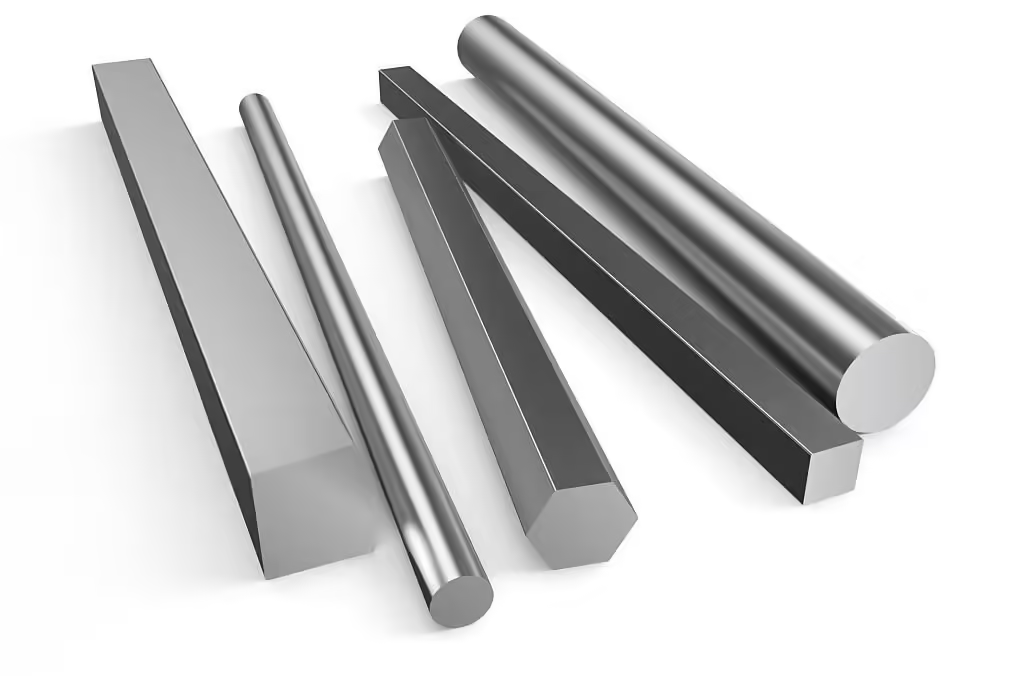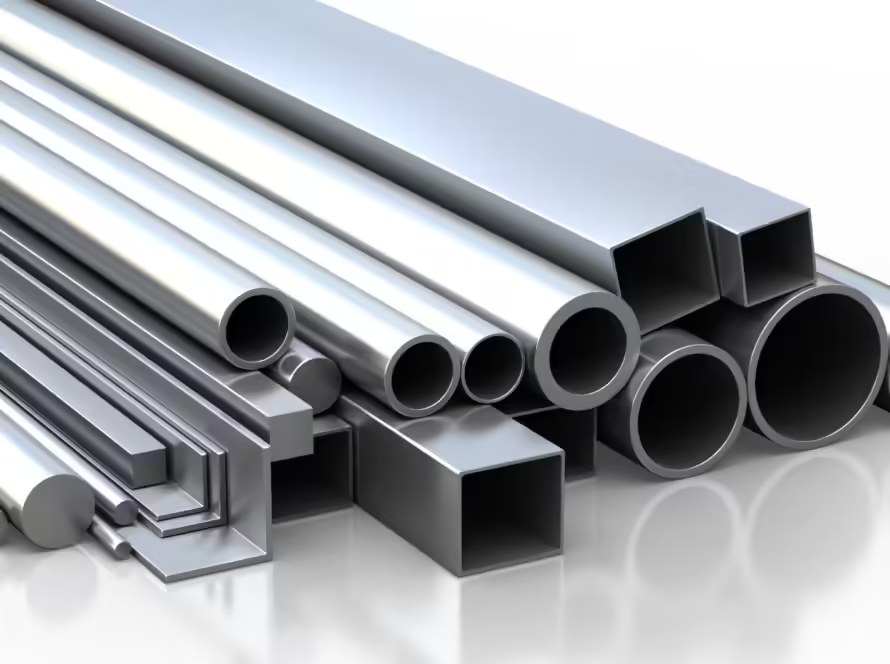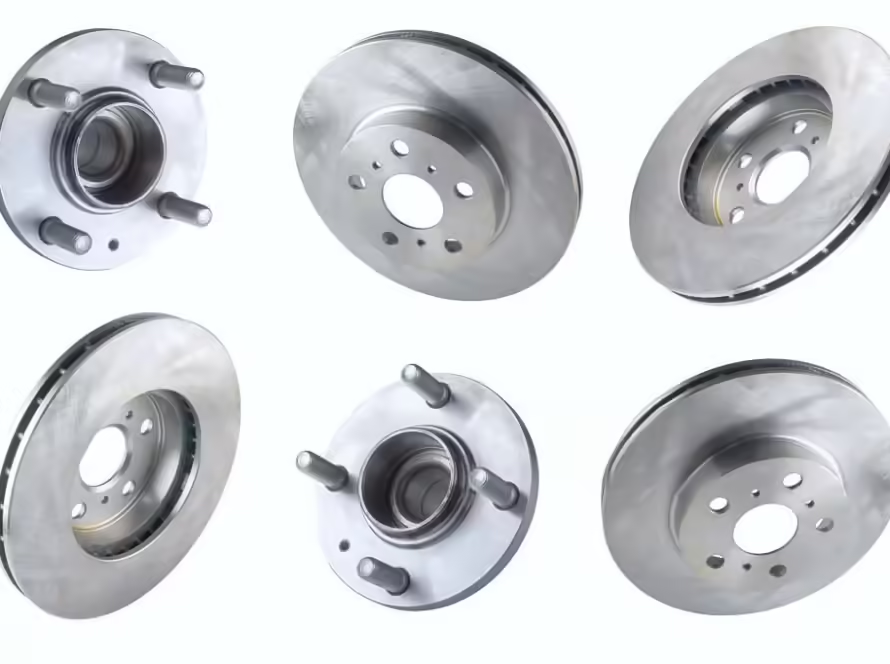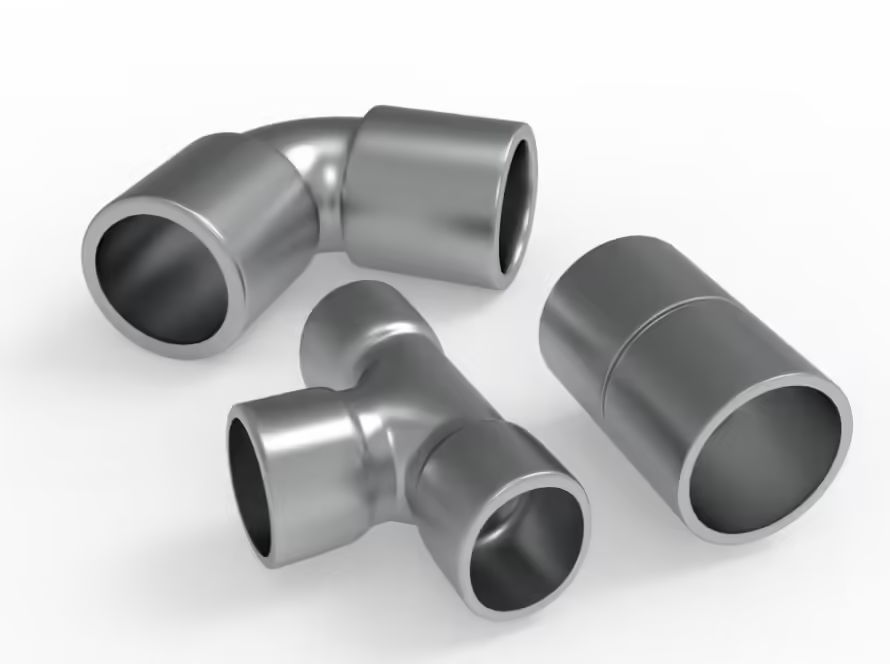definition
Round steel is a type of solid long steel bar characterized by a circular cross-section. Its dimensions are typically denoted by the diameter in millimeters (mm). For instance, the designation “50mm” signifies round steel with a diameter measuring 50 mm.
Classification
Classification by chemical composition
low carbon steel
also referred to as Mild steel with a carbon content ranging from 0.10% to 0.30%, is characterized by its ease of undergoing various processes such as forging, welding, and cutting. This type of steel is commonly utilized in the production of chains, rivets, bolts, shafts, and similar components.
Medium carbon steel
containing a carbon content between 0.25% and 0.60%, encompasses different variations such as killed steel, semi-killed steel, and boiled steel. Apart from carbon, it may also incorporate a small quantity of manganese (0.70% to 1.20%). Classified into ordinary carbon structural steel and high-quality carbon structural steel based on product quality, medium carbon steel exhibits favorable thermal processing and cutting characteristics but limited welding performance. While possessing higher strength and hardness compared to low carbon steel, it demonstrates lower plasticity and toughness. Both hot-rolled and cold-drawn materials can be utilized directly without heat treatment or post-heat treatment. Through quenching and tempering, medium carbon steel can achieve commendable comprehensive mechanical properties, with a maximum hardness of approximately HRC55, HB538, and a tensile strength (σb) ranging from 600 to 1100MPa. Consequently, medium carbon steel is extensively employed in various applications requiring medium strength levels, serving not only as construction materials but also in the production of diverse mechanical components.
High carbon steel
commonly known as tool steel, features a carbon content ranging from 0.60% to 1.70% and is capable of being hardened and tempered. Tools such as hammers and crowbars are typically crafted from steel with a carbon content of 0.75%, while cutting implements like drills, taps, and reamers are fashioned from steel containing 0.90% to 1.00% carbon.
Classification by steel quality
Conventional carbon structural steel
also referred to as ordinary carbon steel, is characterized by broader limitations on carbon content, performance range, and the presence of residual elements like phosphorus and sulfur. In certain regions, including China, it is categorized into three classes based on delivery guarantee conditions: Class A steel, which ensures mechanical properties; Class B steel, which guarantees chemical composition; and Special type steel C, which ensures both mechanical properties and chemical composition, often utilized in the production of critical structural components. A3 steel, with a carbon content of approximately 0.20%, is the most commonly produced and utilized type in China, primarily employed in engineering structures.
Some carbon structural steels incorporate trace amounts of aluminum or niobium to form nitride or carbide particles, restricting grain growth, enhancing steel strength, and conserving material. To meet the specific demands of professional steel applications, the chemical composition and properties of conventional carbon structural steel have been adjusted in China and other countries, resulting in the development of a range of ordinary carbon structural steels tailored for professional use, such as in bridges, buildings, steel bars, and pressure vessels.
High-quality carbon structural steel
characterized by lower sulfur, phosphorus, and other non-metallic inclusions compared to ordinary carbon structural steel, is divided into three main categories based on carbon content and intended applications:
1. Low carbon steel, with less than 0.25% carbon content, includes grades like 08F and 08Al, containing less than 0.10% carbon, widely utilized in applications requiring good deep drawing properties and weldability, such as in automobile components and can-making. For instance, 20G is a primary material for manufacturing standard boilers. Low carbon steel is also commonly used as carburizing steel in the machinery manufacturing sector.
2. Medium carbon steel, with a carbon content ranging from 0.25 to 0.60%, is predominantly employed in the tempered state for producing machinery parts.
3. High carbon steel, with a carbon content exceeding 0.6%, is mainly used in the fabrication of springs, gears, rollers, and similar components. Depending on manganese content, high carbon steel can be categorized into two groups: ordinary manganese content (0.25 to 0.8%) and higher manganese content (0.7 to 1.0% and 0.9 to 1.2%). Manganese enhances the quench-hardenability of steel, reinforces ferrite, and boosts the yield strength, tensile strength, and wear resistance of the material. Steel with elevated manganese content is typically denoted by adding “Mn” after the steel grade, such as 15Mn and 20Mn, to differentiate it from carbon steel with standard manganese content.
Material
| Common materials | |||
|---|---|---|---|
| 8#-10# | 38CrMoAL | 65Mn | 45Cr50Cr |
| 15# | 5CrMnMo | 45Mn2 | 20CrMnMo |
| 20# | 16Mn(Q345B) | 60Si2Mn | 40Mn2 |
| 35# | 50Mn | 20CrMnTi | 35Cr |
| 45# | 15CrMo | 20crmnTiB | 15Mn |
| Q235B | 25# | GCr15 | 40CrMnMo |
| 40Cr | YF45MnV | ML35 | 20CrMnMo |
| 20Cr | 30# | T8-T13 | 27 SiMn |
| 42CrMo | 30Crmo | Cr12 | Crwmn |
| 35CrMo | 30CrmnTi | Cr12MoV | H13(4Cr5MoSiVi) |
| 20CrMo | 60# | 3Cr2W8V | 40crNimo |






